The Thru-Hiker Diet: Eating On The PCT
Ever wonder what you would eat if you had no access to refrigeration, cooking was limited to boiling water, and you had to carry all your food and cooking materials in a backpack with you through the wilderness?
No?
Glad you asked. The answer is simple, friend: your diet closely resembles that of a poor college student (a lot of ramens, pop-tarts, and miscellaneous food items wrapped in tortillas).
The culinary experience of the Pacific Crest Trail will not get you excited to be out on the trail in the first place, but it will make you appreciate having readily accessible food at a nearby market (it will even get you excited about things as repulsive as McDonald’s).

My Research
When I was hashing out my food situation, I read several hiker blogs and was admittedly confused.
People were actually calculating how many calories they intended to eat each day? Were these people crazy? They had every meal and snack meticulously organized, and pre-planned. How could anyone ever expect to accurately do this? My conclusion? These people are dumb. Post-PCT, my opinion has not changed.
Planning every calorie for every day of a five-month thru-hike is an embarrassing waste of time. Unless you have serious dietary restrictions or health issues, forget about planning your food.
So, how did I decide how much food to put in my resupply boxes? Easy. I just filled each box with as much food as I could. Better too much than too little, right? It was always too much.
Planning beyond my next resupply was rarely necessary out on the trail, and I would recommend that future hikers not worry about having their food planned to the tea (HA! GET IT?! Yeah, I guess it was a bit of a stretch). Unless you have thru-hiked before, then trust me, you have no idea what foods you will end up hating, what you will end up loving, or how much of it your body will need throughout your hike.
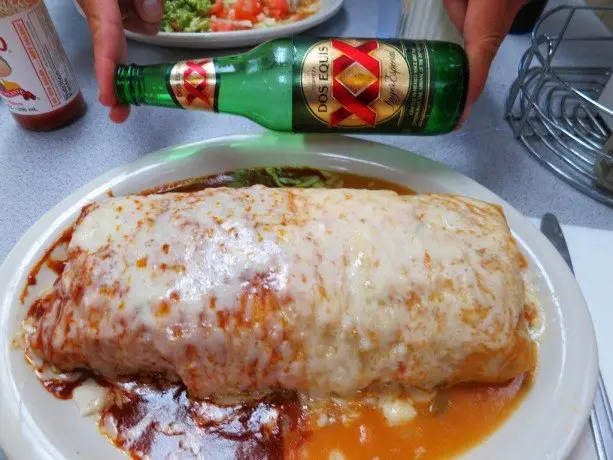
Meals
During the planning stages of the PCT, many people sort out their food into “meals” and “snacks”. An honest mistake.
As my time on the Pacific Crest Trail wore on, I found myself no longer caring what was a “meal” and what was a “snack. When I was hungry, I ate. If I was taking a long break, then I ate more. It’s simple. I do not understand how people turn something as complicated as “when you get hungry, you eat” into something it would appear you need a degree in nutritional science to figure out.
I laughed whenever anyone asked me how many “breakfasts,” “lunches,” or “dinners” I was packing out from town. “I have this much,” I would say, pointing to my food bag, and that was the end of it. It becomes easy to predict when you will be arriving at your next resupply and whether or not you will need to ration your food. Stressing about every resupply is not necessary.
Some days I ate cheese and tortillas for breakfast, lunch, and dinner; some days I ate macaroni for breakfast, three Snickers for lunch, and cereal for dinner; and some days I ate only Clif bars. Regardless of what I ate at what time of the day, all that mattered was that I was putting calories in my body (and hopefully they would come out the other end without issue).
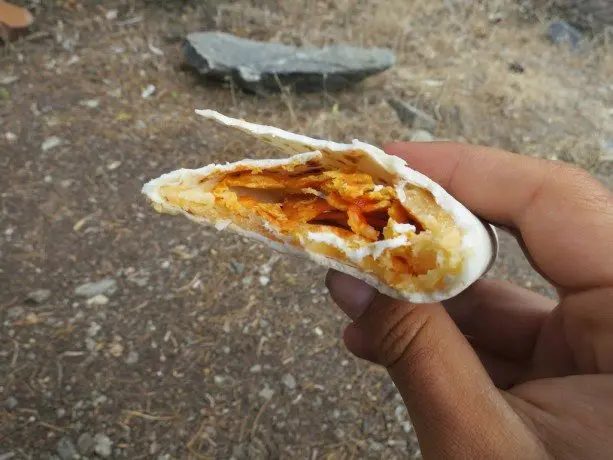
Snacks
SNACKS! I love snacks.
Perhaps the greatest indulgence of the Pacific Crest Trail is that you get to eat as many snacks as you want.
That’s enough incentive to hike the PCT right there. Get your permit now!
Should you find yourself slightly less enthused when presented with the prospect of infinity snacks, then just imagine your most favorite of foods, guilelessly at your fingertips at all times of the day, every day. Unless, of course, you run out. Or your favorite food is hamburgers. Or sushi. Or salad (really, salad?). Or really, anything that isn’t candy or trail mix. But let’s not lose sight of what’s really important here: snacks.
Snacking on the trail became more manageable as my hiker legs came into form, and my body’s demand for rest become less frequent. By Washington, I was taking just a few short water breaks and one longer lunch break per day (except my daily poo break, which of course, remained as long and, therefore, as enjoyable as possible).
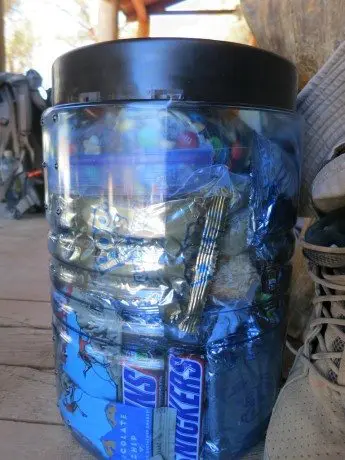
Carrying It All
My backpack was accessible via a bottom zipper opening to the sleeping bag compartment, and this is where I kept my food bag for the first 700 miles of the Pacific Crest Trail.
I had no idea what I was doing.
Not only did this smash my precious pop-tarts, but it exploded my olive oil, and it meant that I needed to remove my sleeping pad each time I wanted to get at some snackage.
When I got to Kennedy Meadows and had to begin carrying a bear canister, this strategy was no longer acceptable (the bear canister would not fit into said pocket). My sleeping bag moved to its rightful compartment, and my bear canister sat upright on top of it. This system was far superior to the one I used for the entirety of the desert.
When the bear canister finally got ditched north of the Sierra, the food storage arrangement remained unchanged. I am sad about how long it took me to figure this out.
Everything that was not individually wrapped was stripped of excess packaging and put into quart-sized Ziploc bags. I never had any problems with food leakage from Ziploc bags (not even my Gatorade powder—also in a Ziploc), and they were reusable for at least a couple of resupplies (they are also good for packing out trash and toilet paper).
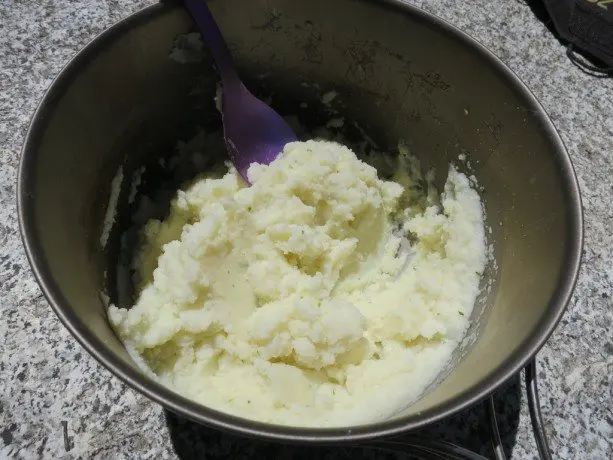
But Wait, So What Did You Eat?
I guess I managed to skip over the specifics, didn’t I?
What follows is what I ate (aka what you can expect to eat) on the Pacific Crest Trail (ordered from approximately most eaten to least eaten):
- Water
- Candy
- Sriracha
- Snickers Bars
- Clif Bars (coconut chocolate chip is best)
- Cheese (packed out 2 pounds at a time)
- Flour tortillas
- Gatorade
- Power Bars (mixed berry is best)
- Pop-Tarts (quite fond of cherry)
- Peanut butter
- Beef jerky (why so expensive!?)
- Ramen (mostly chicken or oriental flavored)
- Nature Valley Bars (Oats & Honey)
- Dried fruit
- Lemonade
- Trail Mix
- Mac & Cheese (blue box)
- High calorie muffins
- Fiesta Sides (they’re OK at best)
- Bear Creek dehydrated meals (heavy but delicious)
- Cereal (Cheerios of the honey nut variety)
- Idahoan mashed potatoes (all varieties are equally disgusting)
- Assorted chips
- Freshly caught fish
- Mountain House
And that’s it! Simple enough, right? I think so.
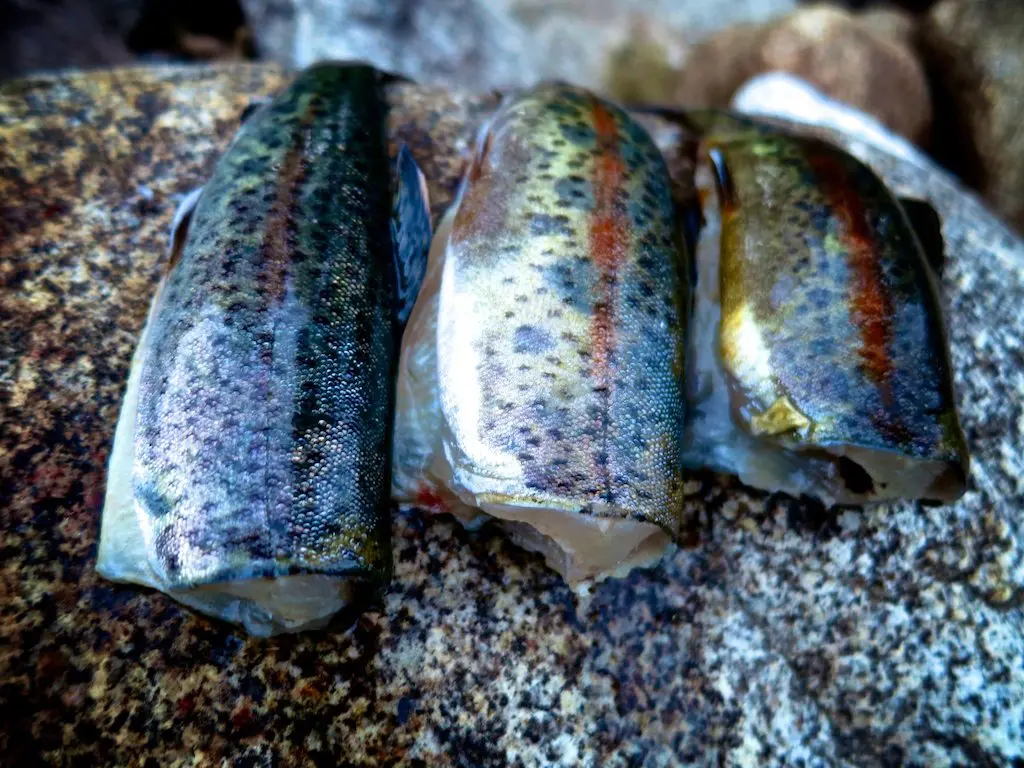
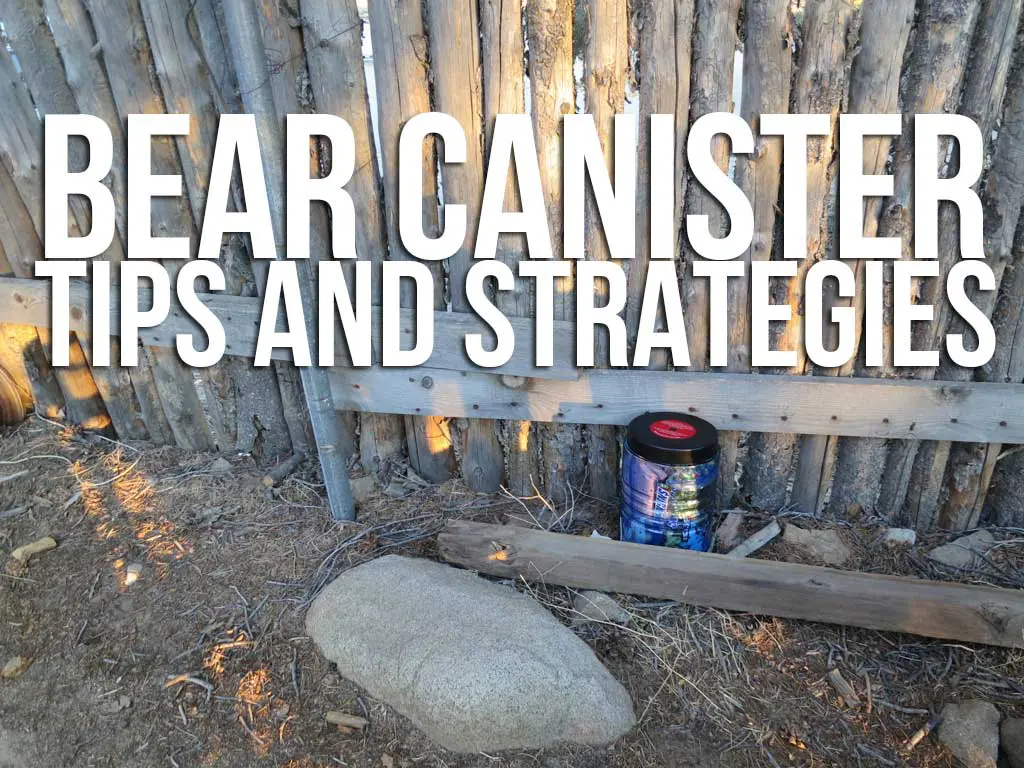
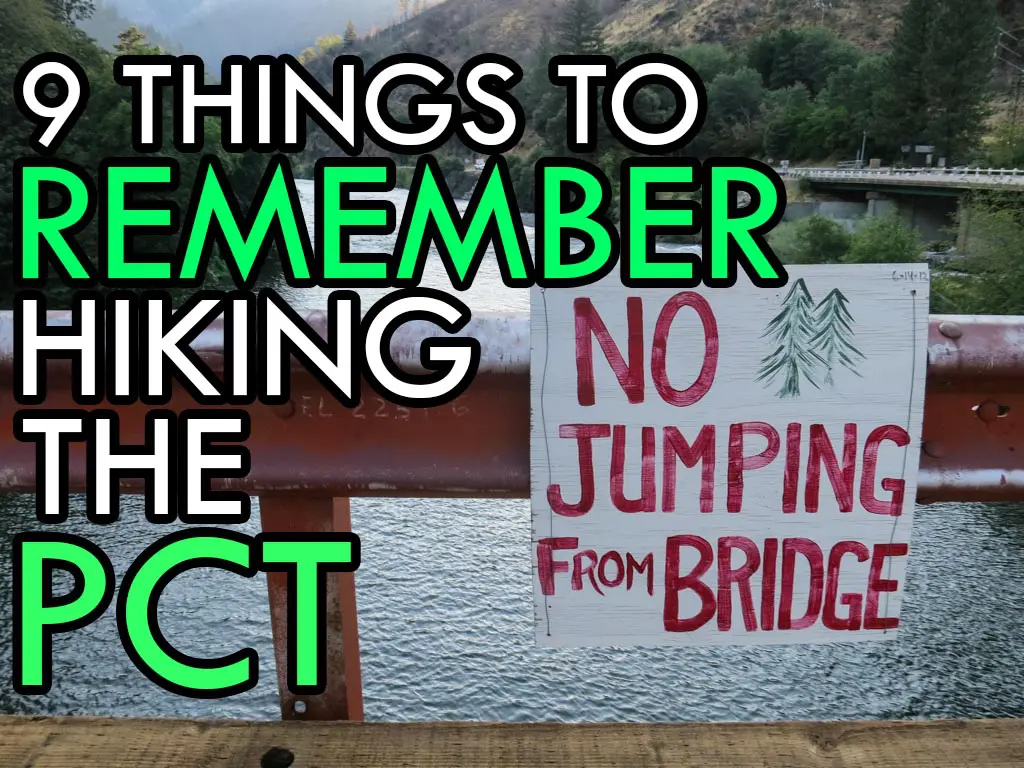


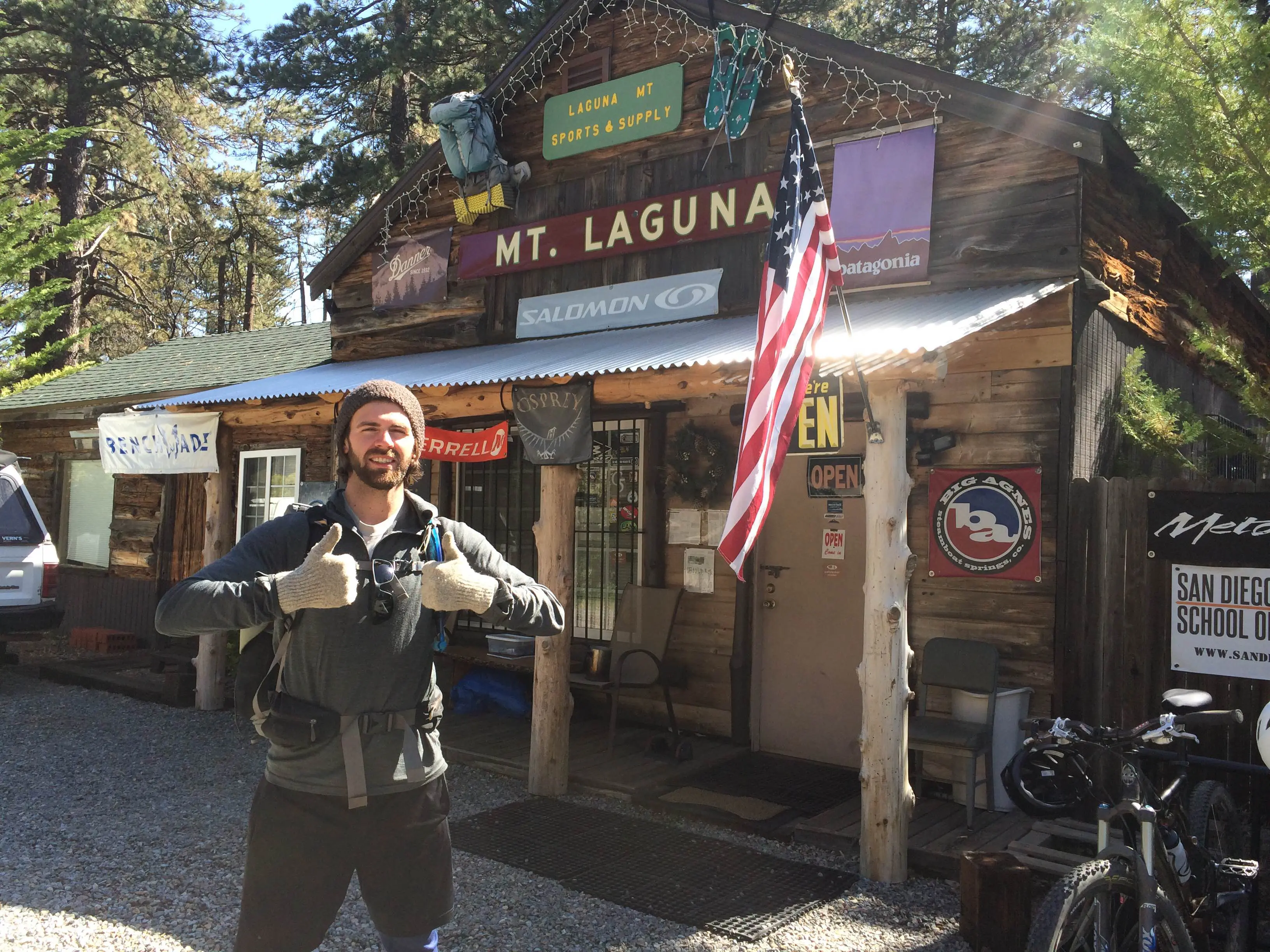

great informative blog for adventure lovers
Thank you!
Hi. I enjoyed your post, but so that folks know there are other ways that work too, let me say I did things totally differently than you re: food and can’t imagine hiking on what you eat on the trail. At the same time, what I did didn’t require a degree in nutrition. I just happen to be a person who cooks at home and who really enjoys and thrives on high quality, real food! So about 3 months or so before leaving on my thru I just started making double batches of my one pot meals and throwing half of it in the dehydrator in hearty meal amounts on fruit leather trays. Then I dump each serving into a zip lock back & have a meal ready to go. By the end of the three months I have everything ready to go.
So I basically eat the same things out on the trail as I do at home. To put together my resupply meals I throw a breakfast (rolled oats w/ dried fruit, nuts & seeds, cinnamon – just dump cold water on it), a lunch (stuff I can cold soak like hummus, refried beans, nut butter, etc & some sort of crackers – rice, wheat or rye), a few snacks (chocolate, various bars, gorp & such), and a dinner (stuff like Thai curries with veg & chicken, Indian curries of the same, shepherd’s pie, beef chili with polenta, turkey & stuffing stew, cowboy beans & rice, smoked salmon & quinoa couscous, blah, blah, blah) into a gallon zip lock; one bag/day. I make up enough bags for about 80% of the number of days I figure it will take me to finish whatever I’m hiking since I knew I’ll be eating some meals in towns as well as the occasional change of pace meals I might pick up and carry out with me from town based on various cravings. Plus I’m conservative in my estimates on how long I’ll take to finish andh always finish my thru’s with bags still in the freezer (great to have on hand for spontaneous weekend trips in the future). I throw all those gallon bags, each containing a days worth of meals, into a chest freezer and head out for the trail. My hubby is my ground crew back home, and I just call and tell him how many days worth of food to send in the next couple of resupplies and he grabs that many bags out of the freezer, tosses them in boxes and sends them off.
My way may seem complicated to someone who doesn’t cook or think much about their food, but for me it’s really not. I’ve eaten the way I eat for over 25 years and it’s no big deal to me to get it ready for the trail. And more importantly, I REALLY enjoy my gourmet meals out there even more than I do at home (hunger being the best seasoning of all)! Everyone I’m out there with is jealous when they see and smell what I’m having for dinner (and more so if I give them a taste), and since I’m eating amazingly delicious and varied meals, I don’t get sick of them. I also find that I don’t eat a ton of crap food when I’m in towns because I’m not feeling deprived and starved the way those living on tortillas, nutella, Ramen Noodles, and the like are. In addition, I think I can count on one hand the number of times I’ve either run out of food or have much if any left over when I arrive at my next resupply, so I’m never hauling extra weight OR going hungry…pretty much ever.
Anyway, most of you guys that are thru-hiking are kids (I’m approaching 60), and I supposed you can eat that crap and not have your energy on the trail or your health tank as a result, but I can’t. I’m wanna stay healthy so I can keep hiking into my 90’s! And anyway, I’m just a foodie who loves to eat, and I make sure I eat just as good on the trail as I do at home! Just sayin’
Thanks for the info! I see you have ramen, Mountain House, Bear Creek and Idahoan listed here. Can you prepare these things without a stove? I’m going stoveless this year and I’m trying to figure out what I can eat beyond tortillas and bars. I’ve heard you can cold soak dehydrated meals (just takes way longer) but I haven’t been able to pin down which work and which things end up watery-crunchy ick. I *thought* you went cold, but now I’m not so sure. Any help appreciated, thanks!
I ditched my stove in Oregon, before then I did boil water occasionally for the purpose of eating. I never did any cold soaking of food, so I’m not any help there. Perhaps after the CDT I’ll know more about this…when I inevitably get rid of my stove again.
I am planning to hike the PCT in 2017. I’m doing tons of research and obviously have time, but I’m curious if anyone has some info on where to look for exactly how much food to pack, how much to send myself in each package, and anything like that. Thanks!
Hey Jamie! I’m planning on hiking the PCT in 2017 as well. Drop me an e-mail; maybe we can help each other coordinate. [email protected]
dudes..Im doing 2017 as well. get at me. [email protected]
I’m also planning on 2017! would love to share some planning ideas, gear etc. My email: [email protected]
I am wondering the same thing. Roughly how many days do you carry for before resupplying? Also how much food for each day?
It all depends on how many days you plan on out being out for. I would suggest taking a look at this post for more information: https://www.halfwayanywhere.com/trails/pacific-crest-trail/pct-2016-survey-resupply-guide/
What kind of cheese did you normally eat? Block cheese? String cheese? Did you ever have any go bad on you?
Usually block cheese (pepper jack / colby-jack / cheddar / etc.) – never went bad on me (but got sweaty in the desert).
Where do you buy the bear creek dehydrated meals?
Your writing style cracks me up!
Not sure Monica – maybe Amazon? http://goo.gl/NCJFum
I’m a runner. When I’m not in running season (usually October to May, for me) I eat a pretty normal amount of food. Then when running season ramps up, I turn into a raging calorie consuming monster. I try hard in the early stages to not lose weight so that I can have strength to handle big weeks when I get to peak running stages. Keep in mind, I’m not some world class (or any class) runner. Weekly mileage is about 50 – 65 miles, usually accomplished in something like 8 hours a week. If I don’t eat enough…I bonk in so many aspects of life. So someday, when I’m packing for a thru hike…I’m going to become a nutritional scientist. Some of the days with your daily intake hardly get me through the day when I’m sitting at a desk all day, let alone walking a trail 8 – 10 hours.
Bonking on trail is not the most enjoyable thing (although it’s also not the least enjoyable thing – I’m looking at you ass chafe), but as the saying goes, “just keep eating” (that’s a saying, right?).
I am interested in doing the PCT, but the desert and my tendency to succumb to heat exhaustion have me worried. I have read a few trail stories and some say the heat is brutal and others say it wasn’t as bad as they thought it was going to be. I know there is no right answer, but even if I do most of my hiking in the cool of the evenings…for at least some of the day…I will still have to endure the heat of the days. Any advice you can provide will be greatly appreciated. Thanks so much.
The heat really can be variable depending on the year and your luck with the weather, but it will be hot (not humid) no matter what. You can avoid the heat, if you want, by hiking at night or during the early morning. Some people carry umbrellas, while others choose to simply cover up or use sunscreen. Perhaps a post about avoiding heat in the desert is in order.
Start at dawn. You should be ready to go when you can see. Take a siesta. Not kidding. 11 am to 3 pm = the suck. You can take that time off and be more efficient for the 10 hours daylight remaining to you.
Wear a good, broad rimmed hat. Focus on water, and make sure you have some decently salty foods. Be aware that your sweat will evaporate very quickly, and you *will* underestimate how much water you’re using if you’re not familiar with arid environments.
If you have the capacity at all, vary your gear load for the southern half. You really won’t need much in the way of warms, you WILL need water. This would be a good area to skip the stove and just cold camp to carry that much more water. You don’t have that far between food resupplies through much of the desert, and you should still have a padding of reserve fat this early on.
If you move with the herd, or a couple weeks ahead, the caches will probably be full. Don’t count on them for survival but accept them for comfort :)
In dry heat, if you have enough water and keep the direct sun from baking your brain you will be fine. I really don’t like the heat, but I’ve done a lot of outdoor work as well as hiking in eastern San Diego County/ southern Riverside County during the summer. Those two rules – protect your head and camel up – will get you through.
Just start your hike in like Feb. That way your out of the desert by spring.
You will hit a lot of snow hiking through the desert in February.
I can’t tell you how much I enjoy your highly readable and informative posts. May I say though that it’s not fun to read that other hikers are “dumb” for doing things a different way. Why go personal? Otherwise, keep up the great work, and thanks.
Hey Kevin, not sure where I’m calling other hikers dumb here – definitely not my intention. Just trying to share everything through the lens of my own experience and from my own point of view. Glad you’re enjoying the blog!
You’re calling them dumb at the beginning of the post:
“They had every meal and snack meticulously organized, and pre-planned. How could anyone ever expect to accurately do this? My conclusion? These people are dumb.”
Touché, Jon. Touché.
Bear Canister requirements for the Sierras aside, for the rest of the trail what are your recommendations for food storage/protection needs, techniques, strategy. Etc. Thanks for any help.
Maybe I should write a whole post on this (because what’s more interesting than food storage techniques!?).
My strategy in the desert was leave my food in my backpack, and north of the Sierras it became “hang my food bag slightly off the ground by the drawstring on my stuff sack”.
I feel like I need to do the PCT specifically so I can eat as many Tim Tams as I’d like. I may need to get a packet like this though…
http://www.youtube.com/watch?v=KoggSVxghWs
You can basically eat infinity anything. It’s glorious. Best diet ever.
I’m 6’1″ and weigh 157, which for a guy, is super skinny. I think I’d have to look into horse steroids to make sure I didn’t lose weight on the trail…good strategy?
Do they have elephant steroids? Those are probably more awesome than horse steroids.
I’ve heard olive oil is helpful in that regard. Really high calorie density for the weight.
Hello friend! I will be doing the PCT in April of 2015 and Was just wondering about Approximate food costs for both trail food and meal breaks in towns. Any information would be super appreciated. <3
I did a sort-of breakdown of my expenses on the trail here:
https://www.halfwayanywhere.com/pacific-crest-trail/much-cost-hike-pacific-crest-trail/
Let me know if that helps. I will be happy to answer any more specific questions you may have.